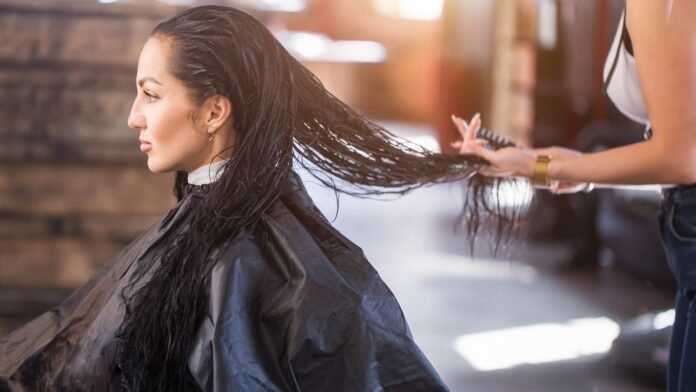Find the differences between keratin and nanoplastia hair treatments, and know the best option for healthy, smooth, and frizz-free hair.
Hair is one of the most integral aspects of our appearance. In an era where social media dominates and personal grooming takes centrestage, selecting the right hair treatment has never been more crucial. Whether you’re aiming for smoothness, shine, or overall hair health, understanding the best options available is essential. Let us explore two popular hair treatments—keratin and nanoplastia—and help you decide which is best suited for your needs.
As we navigate through various weather conditions and lifestyle changes, our hair often suffers due to factors such as pollution, heat styling, nutritional deficiencies, and chlorine and hard water exposure. It can lead to frizzy, dull, or damaged hair. Additionally, the pressure to look good online means many people are seeking effective hair treatments that provide both instant results and long-lasting benefits. With numerous options on the market, it’s essential to choose a hair treatment that not only addresses immediate concerns but also nurtures the hair’s overall health.
Is keratin treatment good for hair?
Hair treatments, particularly keratin treatments, have gained immense popularity for their ability to transform frizzy hair into sleek, shiny strands. This hair treatment utilises a keratin-based formula that is infused into the hair shaft through the application of heat. While it can provide a quick fix for a bad hair day, it’s essential to weigh the pros and cons.
Pros of keratin treatment
- Smoothing effect: Excellent for managing frizzy and curly hair, making it easier to style and maintain.
- Enhanced shine: Adds a glossy finish that many desire, making hair appear healthier and more vibrant.
- Style versatility: Because it makes hair more manageable, it allows for a broader range of styling options.
Side effects of keratin treatment
- Chemical concerns: Some formulations contain harmful chemicals, including formaldehyde, which can pose risks to both hair and overall health, as a study published in PubMed Central has found.
- Frequent maintenance: Results are not permanent and require regular salon sessions for upkeep, which can be both time-consuming and costly.
What is nanoplastia treatment for hair
For those looking to avoid harsh chemicals, nanoplastia presents a modern approach to hair care. Utilising advanced nanotechnology, this treatment nourishes hair with essential vitamins and nutrients, working from the inside out to promote hair repair and overall health.
Benefits of nanoplastia
- Nourishing benefits: This treatment holistically improves hair health while also enhancing texture and shine.
- Longevity: Nanoplastia provides longer-lasting results compared to traditional treatments, often requiring fewer touch-ups.
- Customizable: It can be tailored to suit various hair types and individual health objectives, making it a versatile option.
Side effects of nanoplastia
- Limited availability: Despite its growing popularity, facilities offering this treatment may not be widely accessible, making it harder to find a reputable salon.
How to choose the best hair treatment?
Deciding between keratin and nanoplastia ultimately comes down to your personal hair goals. Here are a few considerations to keep in mind:
- Quick fix vs. sustainable solution: If you need a speedy solution to frizz and don’t mind salon visits every few months, keratin might be your go-to choice. However, always ensure you find a salon that uses safe products.
- Health vs aesthetics: If long-term hair health and nourishing treatments are essential to you, nanoplastia is likely a better choice.
- Current hair condition: Consider the current state of your hair. If it’s severely damaged, investing in a more comprehensive treatment, such as nanoplastia, might be more beneficial.
Tips for healthy hair
Regardless of the treatment you choose, maintaining healthy hair requires a conscious effort and commitment. Here are some tips to ensure your hair remains vibrant and strong:
- Regular hair care routine: Create a consistent routine that includes cleansing, conditioning, and occasional deep treatments.
- Protect from heat: Use heat protectants when styling to minimise damage from tools.
- Nutrition matters: Incorporate a balanced diet rich in vitamins and minerals that promote hair health, as published in the Longdom Publishing SL journal.
- Regular trims: Schedule regular haircuts to prevent split ends.
Ultimately, the best treatment is one that aligns with your lifestyle, hair type, and personal preferences. Commit to a solution that not only changes your look but also fosters lasting hair health.
You may also like


Disclaimer: At Health Shots, we are committed to providing accurate, reliable, and authentic information to support your health and well-being. However, the content on this website is intended solely for informational purposes and should not be considered a substitute for professional medical advice, diagnosis, or treatment. Always consult a qualified healthcare provider for personalised advice regarding your specific medical condition or concerns.


